France
Saint – Remy – de – Provence
The early morning air was crisp and cool when we visited Remy in late October. Golden leaves crowned the trees in the town square. We parked, found a bakery where the buttery, crispy croissants were hot out of the oven, and settled down in the caressing fall sunshine to savor a typical French breakfast.
At that early hour, the square was deserted. A mere handful of early risers were out and about walking their dogs, greeting neighbors, and going about their daily chores.
We hiked the gentle uphill mile to the Saint-Paul Asylum, where Vincent Van Gogh produced some of his most famous paintings while being treated for severe depression and erratic behavior from 1889- 1890.
We passed quaint, picturesque, stone, French cottages. The silence was punctuated only by our footsteps and the twittering of birds greeting another picture-perfect autumn day in Provence.
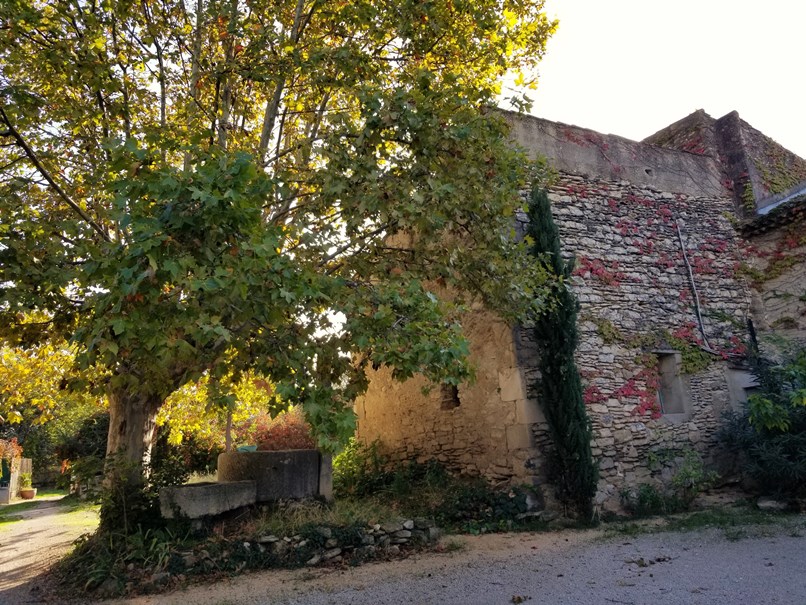
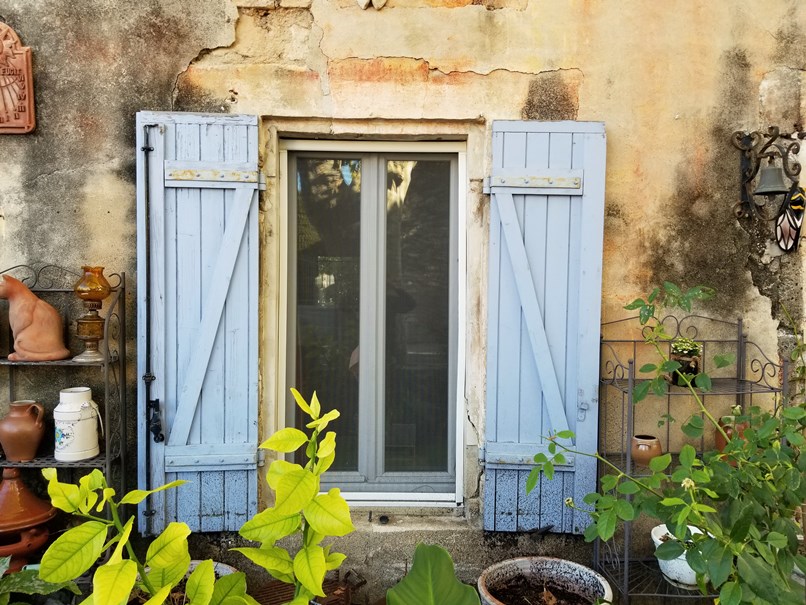
When we reached the half-mile mark, we came upon reproductions of Van Gogh’s work displayed on the sidewalk accompanied by experts from letters that he had written to family members as well as entries from his diaries in which he expressed his emotions, commented on his state of mind, and the sentiments that he was striving to portray in his paintings.
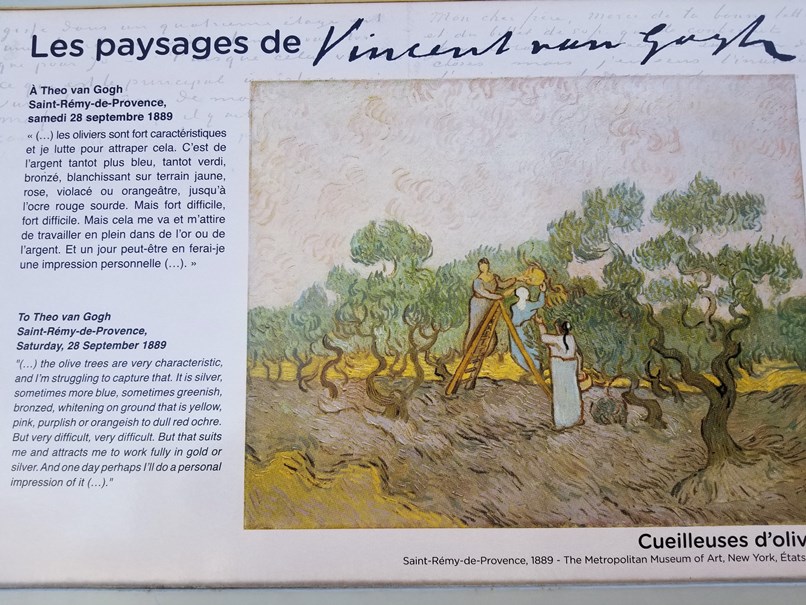
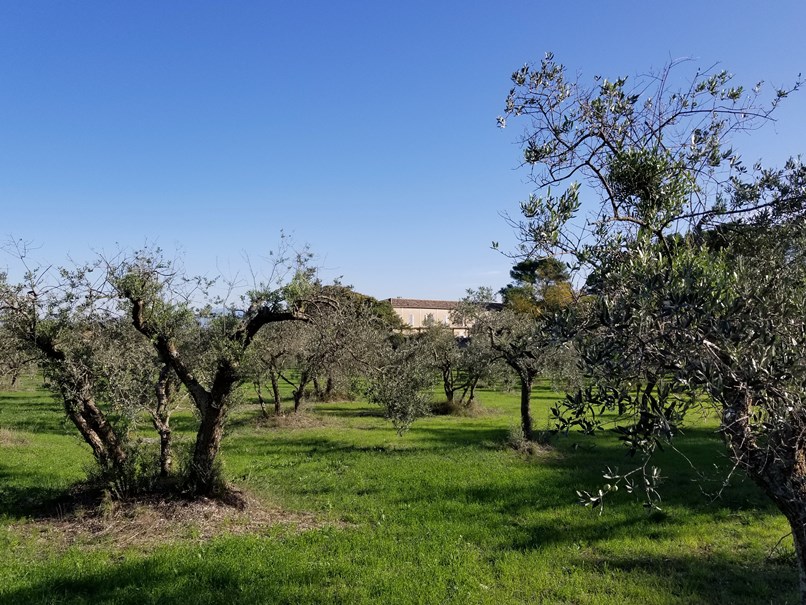
One had only to gaze at the fields, the trees, and the landscape, to recognize how much the surrounding countryside inspired Van Gogh.
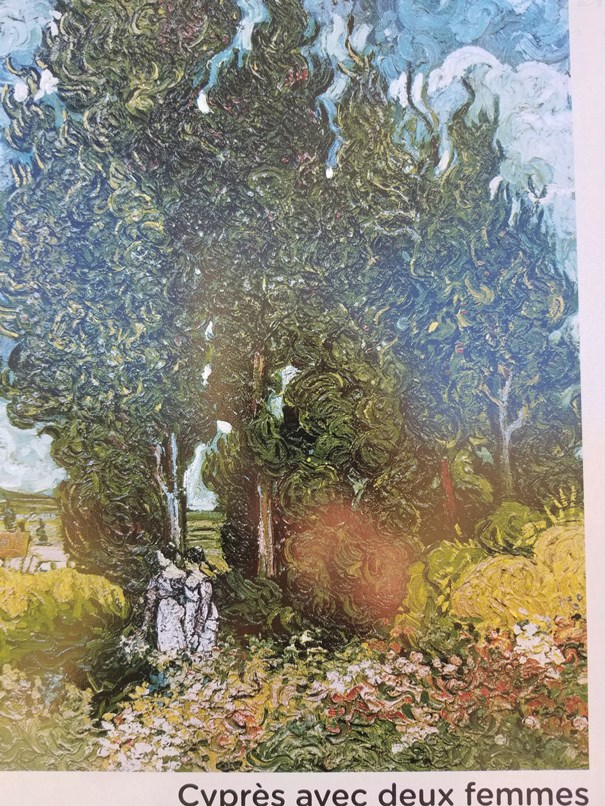
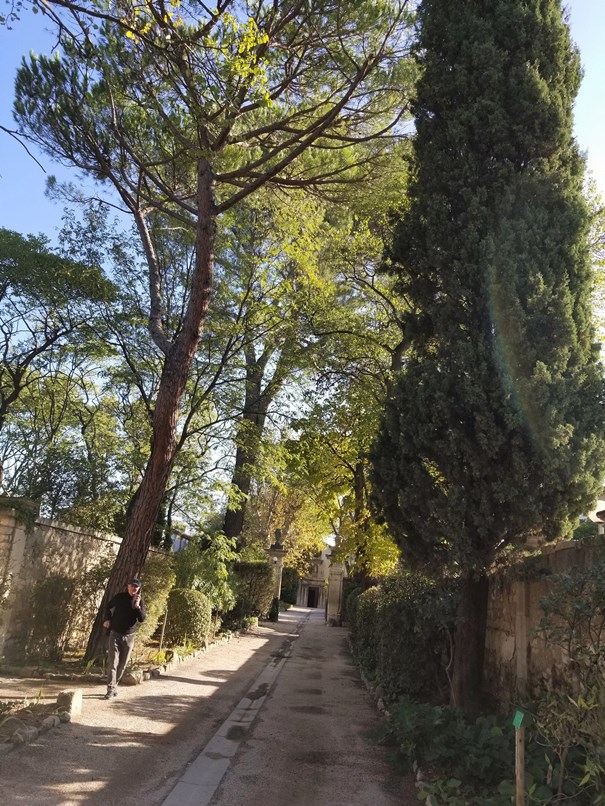
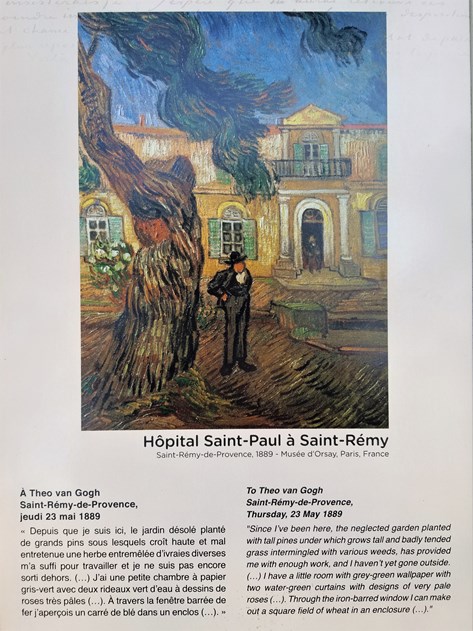
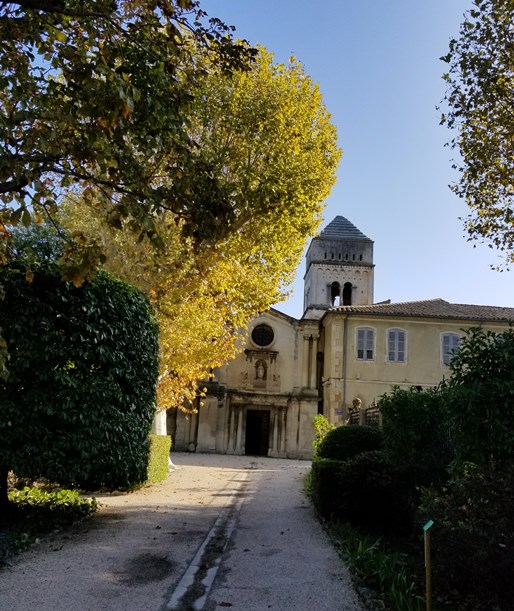
St. Paul de Mausole was originally a monastery. Van Gogh’s bedroom, which overlooked fields that burst out into a carpet of purple lavender in the spring, and the room across from his bedroom, which he used as his studio, have been arranged to mirror the way they looked in the years that he occupied them.
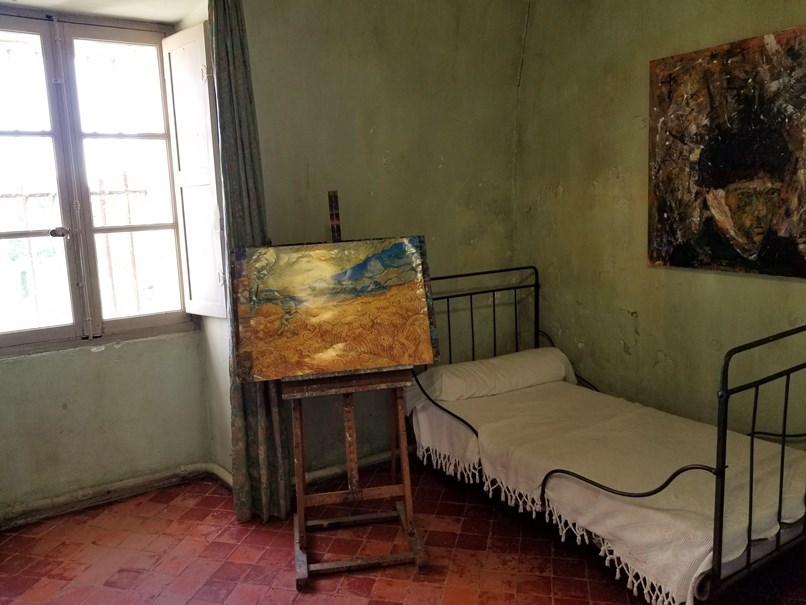
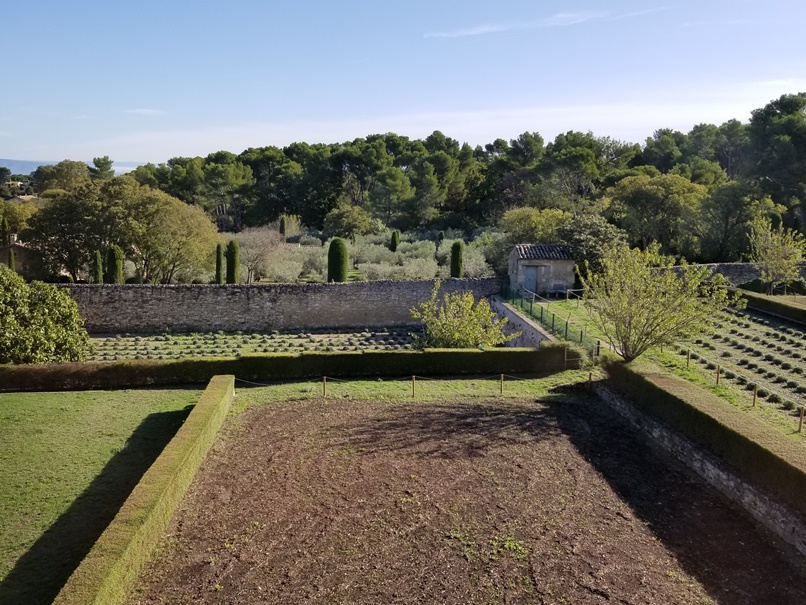
We rented headsets, which led us on a comprehensive tour of the chapel; the monastery and cloister; Van Gogh’s living quarters; the views that he painted from his bedroom; and the gardens.
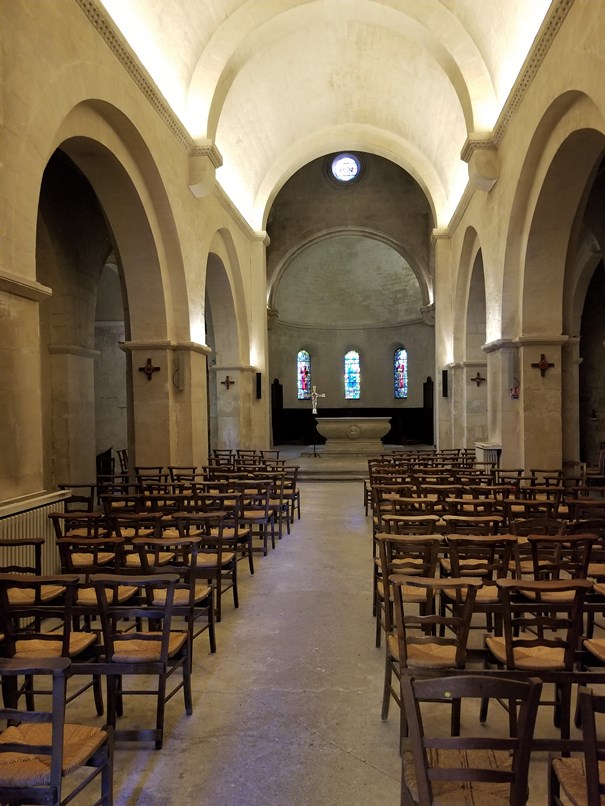
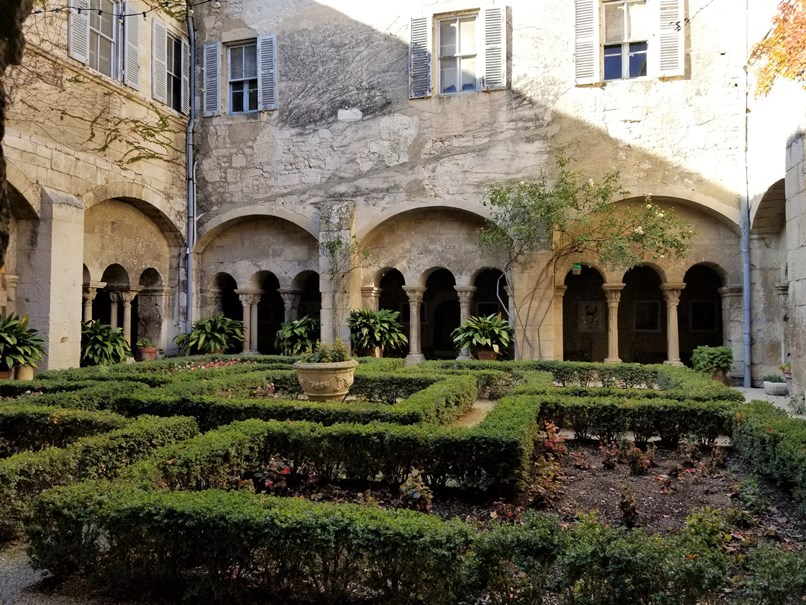
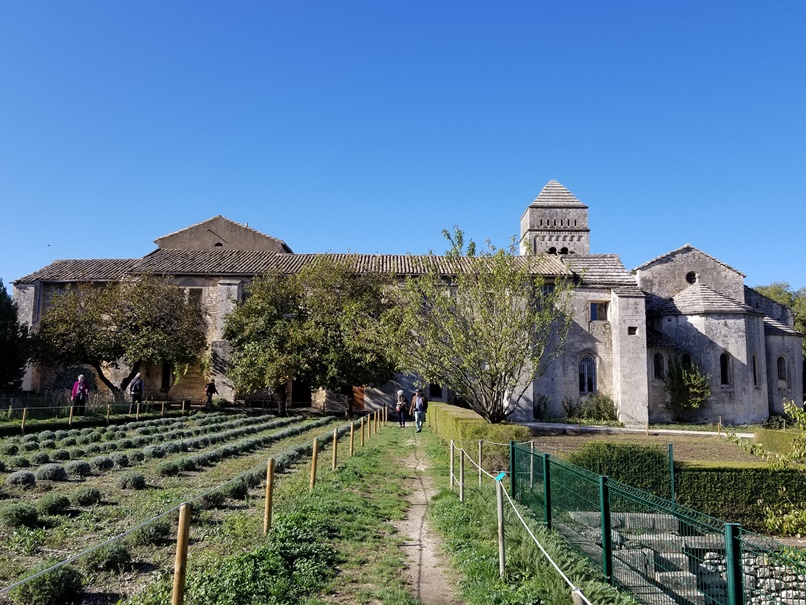
TIP: Arrive early. Only two other couples were visiting when the doors opened. Cloaked in peaceful silence, one could feel the aura of the setting while being acutely aware of the juxtaposition of the beauty of Van Gogh’s surroundings, the masterpieces that he created here, and the tragedy of his depression and mental illness. By the time we departed, the tiny stairway was clogged with a large, noisy group, following their tour guide who carried the ubiquitous guide’s umbrella aloft.
Glanum – the Roman City
A ten-minute walk from Saint Paul de Mausole – out the gate and a left turn – brings you to Glanum, as impressive ancient Roman city, which was first excavated in 1921. It was constructed between the 4th and 2nd century BC in the vicinity of a gorge, with a stream running through it.
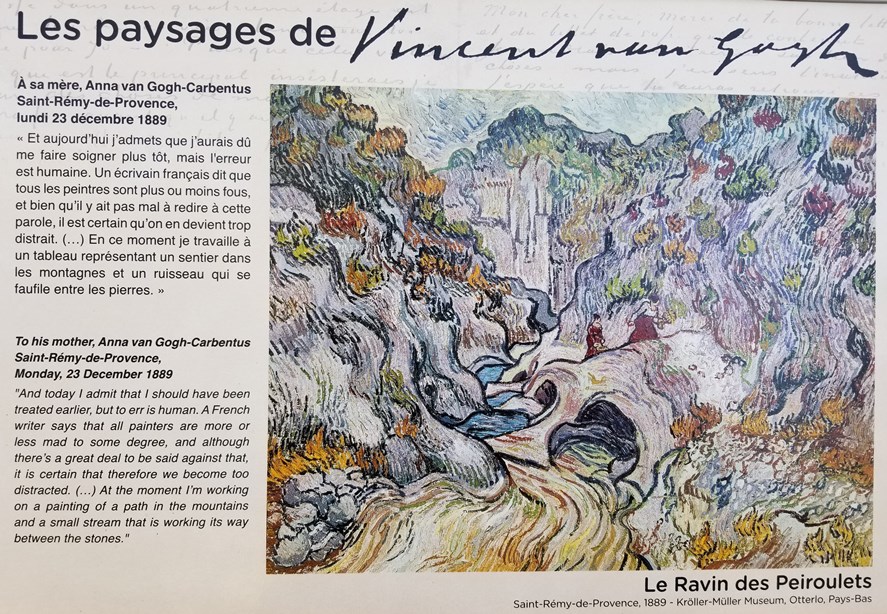
In 260 AD, the town was destroyed by the Alamanni (of Germanic origin) and subsequently abandoned. Once the efficient Roman system of drains and sewers was no longer maintained, the ruins of the ancient city were flooded and covered by mud and sediment. The remains of Glanum lay buried and preserved for 17 centuries.
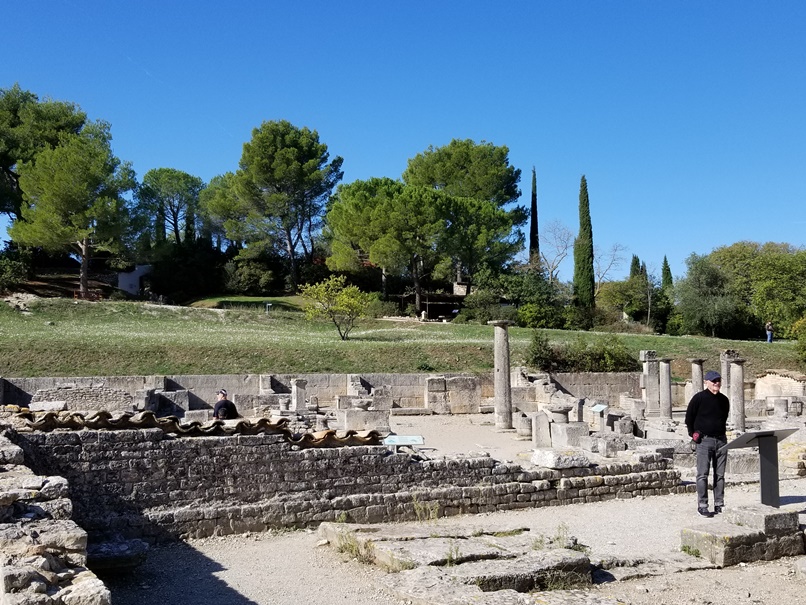
From 1921 – 1969 archaeologists uncovered the mausoleum of the Jullii, (the Julii were one of the most distinguished families in Rome), the Triumphal Arch, the shrines that were built to honor emperors, the forum (town square), the basilica, a vast number of Roman baths, and the main street and residences on the northern end of the town.
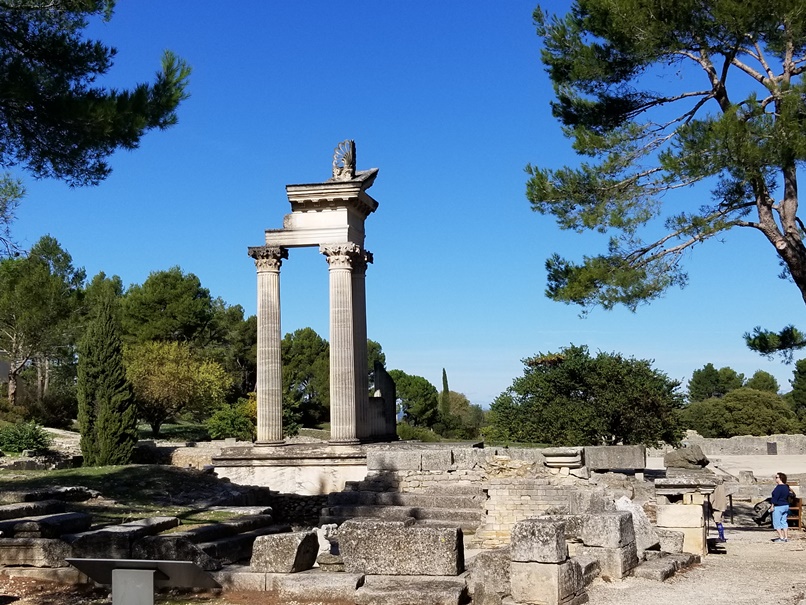
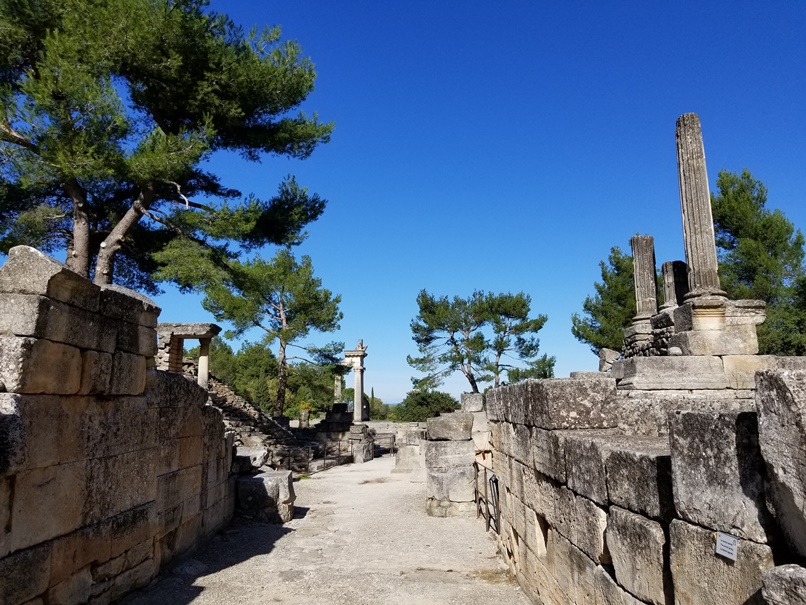
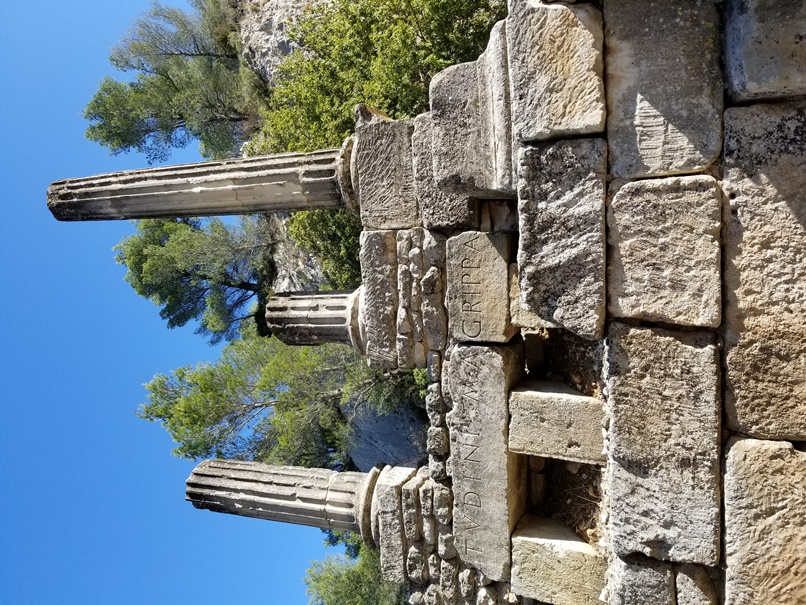
Plan on spending a good hour or two exploring the site. It’s well worth the time to see this remarkably preserved ancient Roman City.
